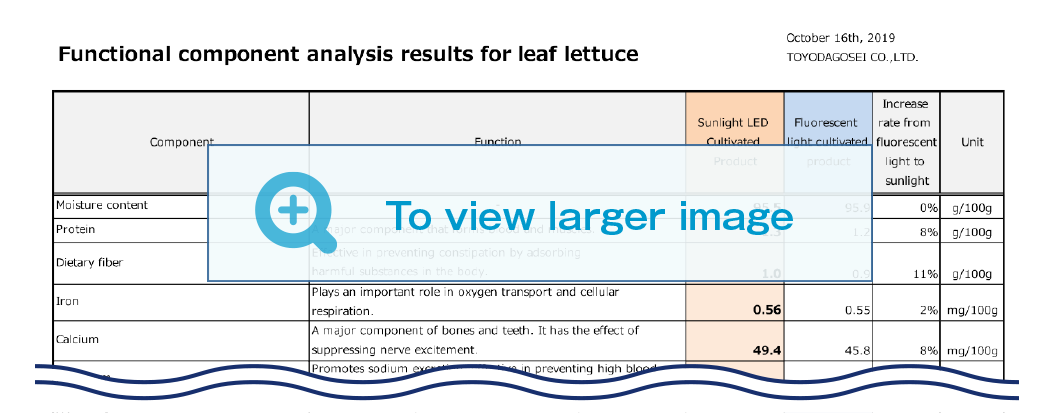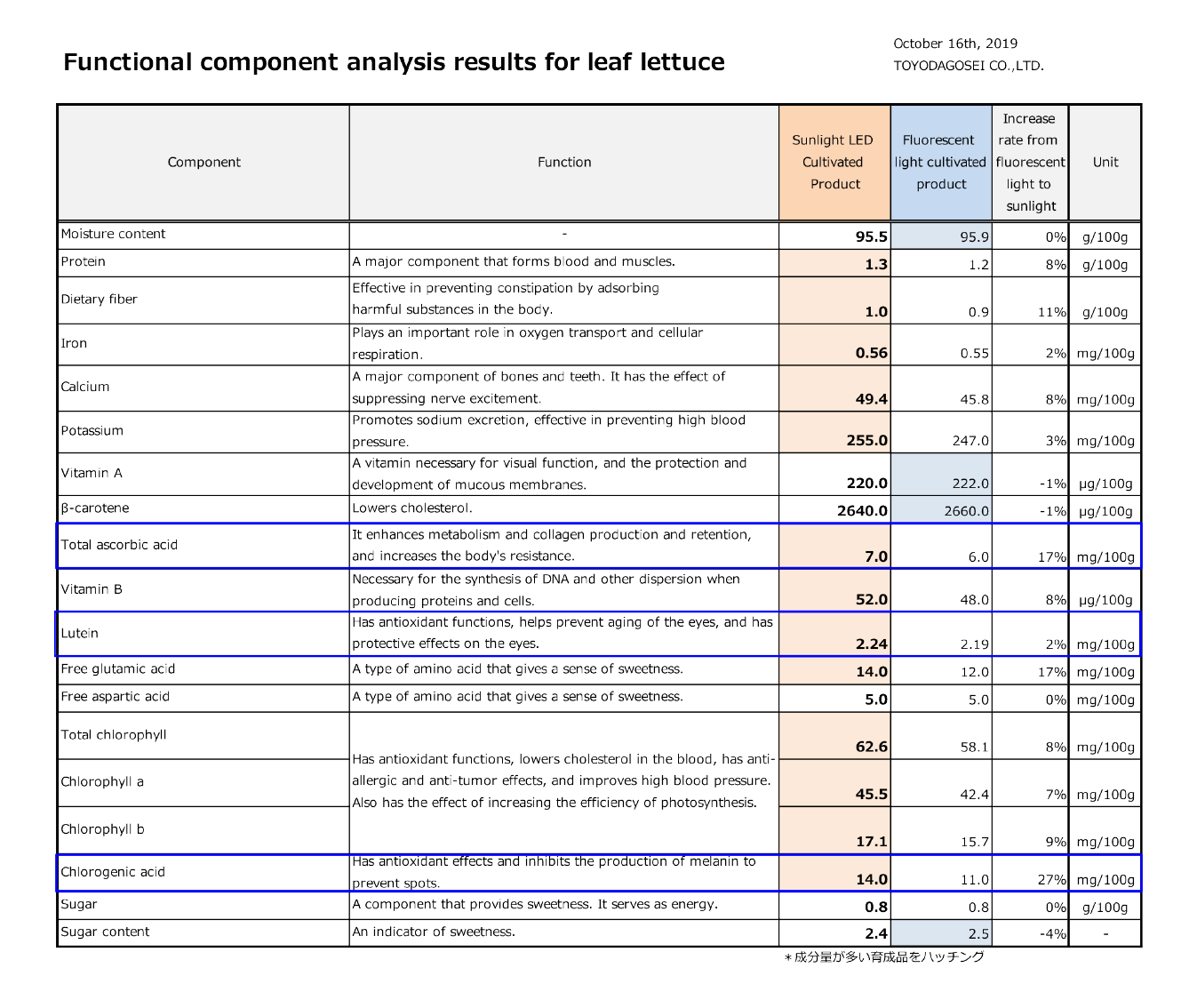Results from Joint Research with Research Institutions
-
Suppressing overgrowth and physiological life span to produce robust seedlings! ▼
- Verified at the Johkan Research Lab, Chiba University
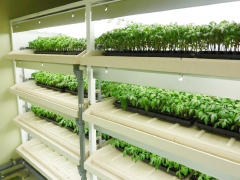
-
Increase in the flavor components (such as glutamic acid) of leaf lettuce!* ▼
- Verified in lettuce cultivation in an artificial light-type plant factory
Sunlight LED Cultivated Products
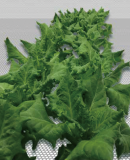
Fluorescent Light Cultivated Products
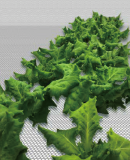
- ※Comparison to Fluourescent Light
-
Improving Intellectual Productivity* ▼
Verified at the
- Komatsu Research Lab, Nagoya Institute of Technology
- Shimada Research Lab, Tokyo Denki University

- ※Intellectual Productivity
Efficiency of simple tasks.
In this trial, it was evaluated using the Uchida-Kraepelin test.
-
Faithfully reproduces the way objects are seen. ▼
- Verified at the Mizogami Research Lab, Chiba University
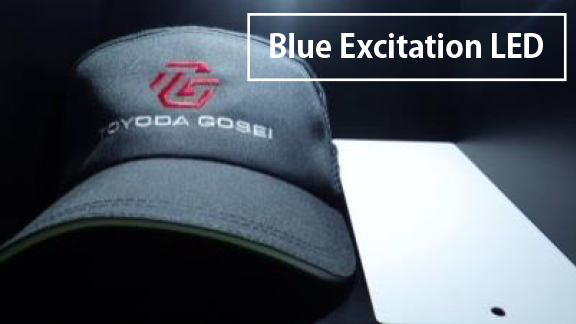
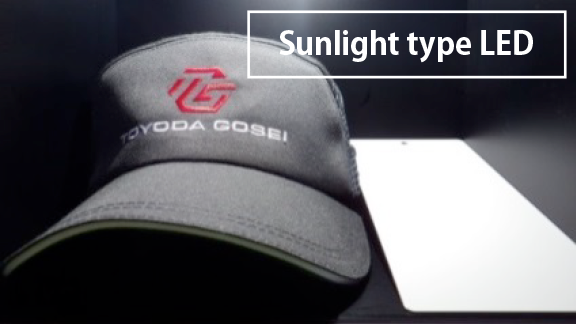
-
Reproduces the natural appearance of wooden materials. ▼
- Verified at the Komatsu Research Lab, Nagoya Institute of Technology
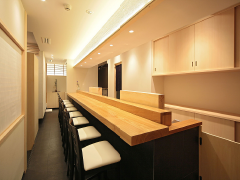
- *These results are from joint research with universities and do not guarantee actual effects.
Suppressing overgrowth and physiological life span to produce robust seedlings!
Research Contents
- Research Institution: Chiba University
- Test Levels: Three types - Sunlight LED, Fluorescent Light, and Standard LED Lighting
- Test Contents: Evaluation of the cultivation weight, overgrowth occurrence rate, and physiological disorder occurrence rate under each light source.
Seedling Cultivation Test Results at Chiba University
Cultivation Condition
Equally or more effective than fluorescent and general LED lights in all three categories: cultivation weight, overgrowth suppression, and physiological disorder suppression.

Increase in the flavor components (such as glutamic acid) of leaf lettuce
Research Contents
- Test Location: Artificial Light-type Plant Factory
- Test Subjects: Sunlight LED and Fluorescent Light
- Test Contents: Evaluation of the growth of leaf lettuce under each light source and the content of components after cultivation.
Analyzed at the Japan Food Research Laboratories (JFRL). - Results: Confirmed the increase of functional components and flavor with the Sunlight LED spectrum.
Lettuce Cultivation Results in an Artificial Light-type Plant Factory
Cultivation status
"Although the brightness (PPFD) is about 40% lower compared to fluorescent lights, the cultivation status is equivalent."
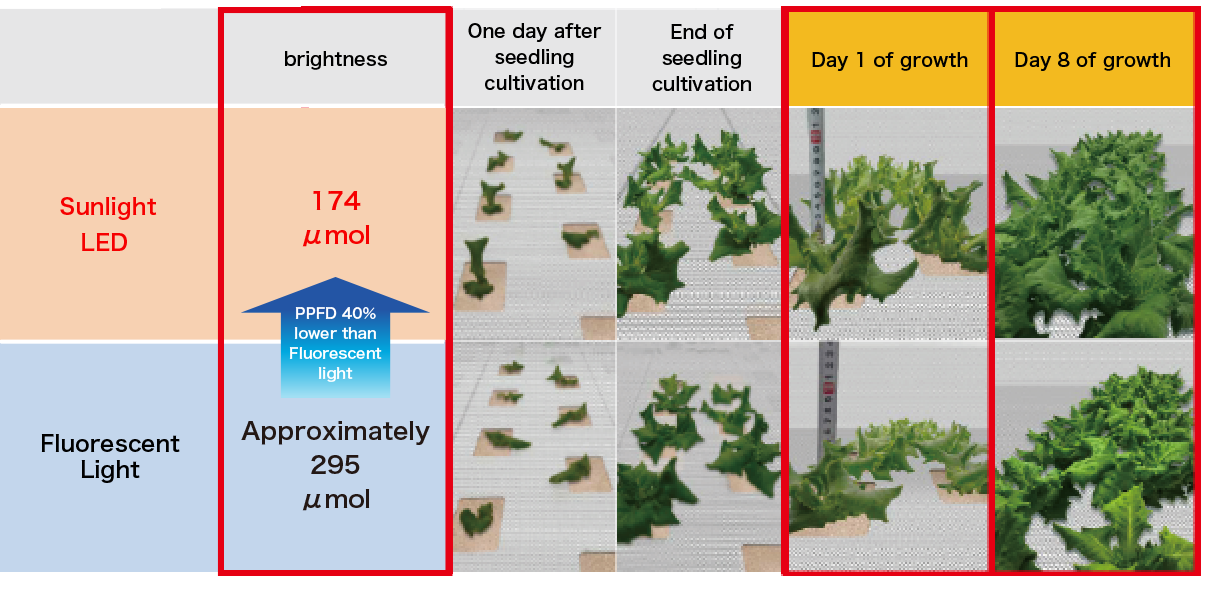
Results of component analysis (Foundation) Japan Food Research Laboratories(JFRL)
In particular, the content of umami components such as free glutamic acid and chlorogenic acid, which has antioxidant effects, is about 20-30% higher.
Lettuce Tasting Results (Blind Test)
As a result of the lettuce tasting, three times as many people compared to those under fluorescent light responded that the lettuce grown under sunlight was delicious.
Although the brightness (PPFD) was about 40% lower compared to fluorescent lights, there was almost no difference seen in the cultivation weight.
Tasting results
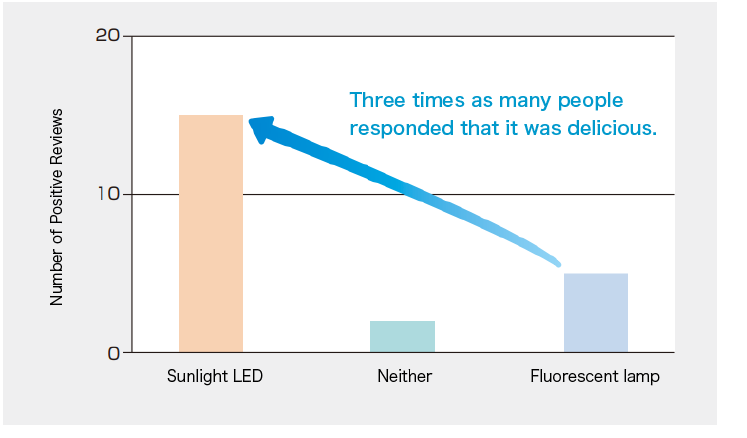
Tasting Comments

Weight Measurement Results
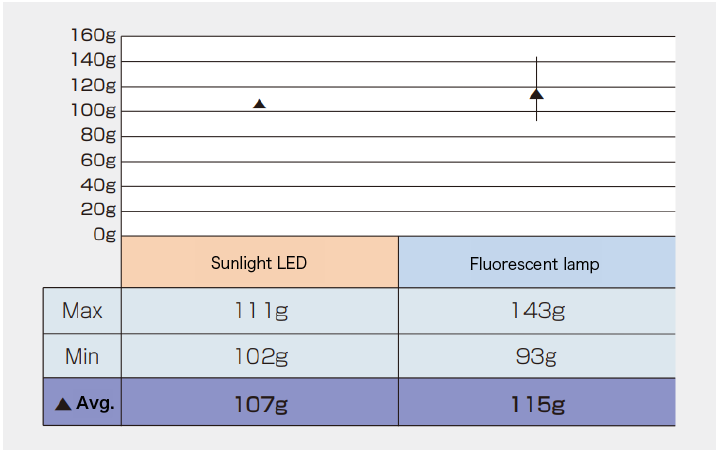
Lettuce Photo
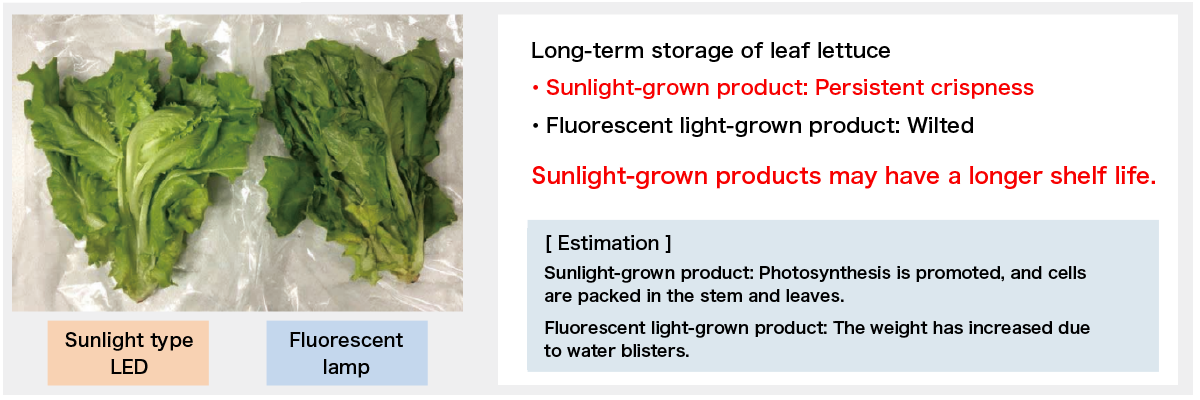
Improving Intellectual Productivity
Research Content
- Research institutions: Nagoya Institute of Technology and Tokyo Denki University
- Test levels: Two types, Sunlight LED and Ra80 Blue Excitation LED.
- Test content: Evaluating intellectual productivity, concentration, and stress under each light source.
- Paper presentation: Nagoya Institute of Technology, 2018, Illuminating Engineering Institute of Japan National Convention
Tokyo Denki University, 2019, Japanese Society for Medical and Biological Engineering Convention
Evaluation results of intellectual productivity by Nagoya Institute of Technology
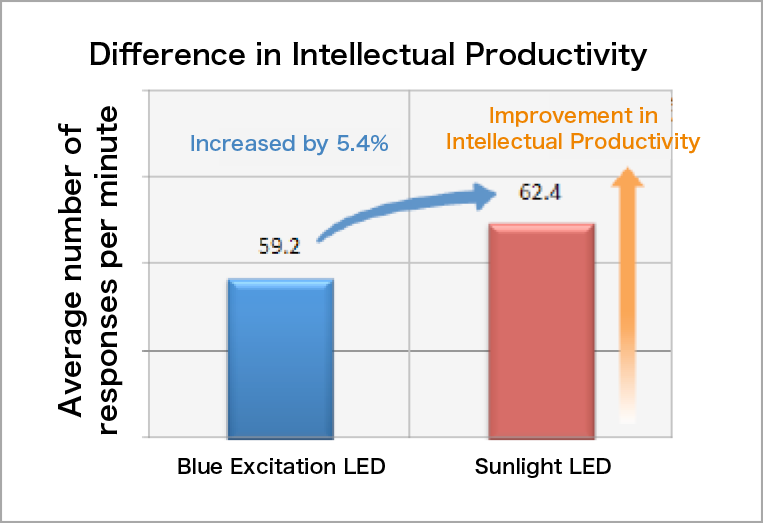
- ※Difference in average number of responses for 120min
Total Increased average number of
responses = Improved intellectual productivity
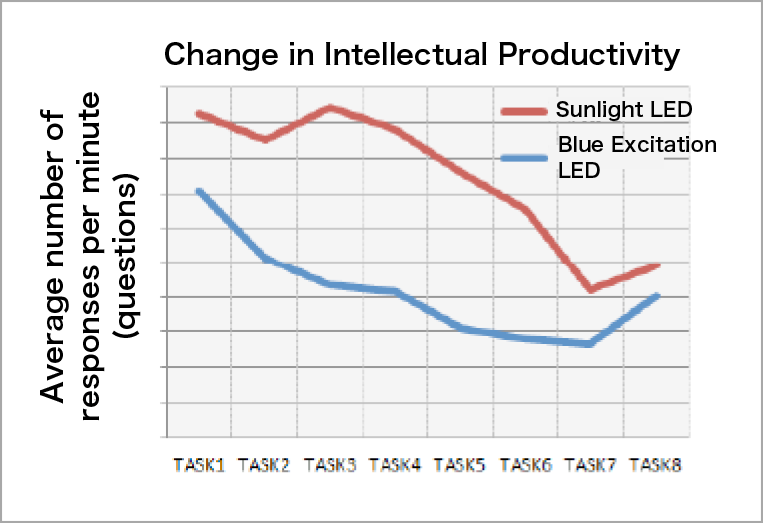
- ※Transition of average number of responses over time,
with 15min as TASK
Conclusion by Professor Komatsu, Nagoya Institute of Technology
It was shown that the sunlight-type LED light source with a flat spectral distribution in the short wavelength region enhances concentration on work, suppresses fatigue caused by work, and has a positive impact on intellectual productive activities.
Evaluation results of intellectual productivity by Tokyo Denki University
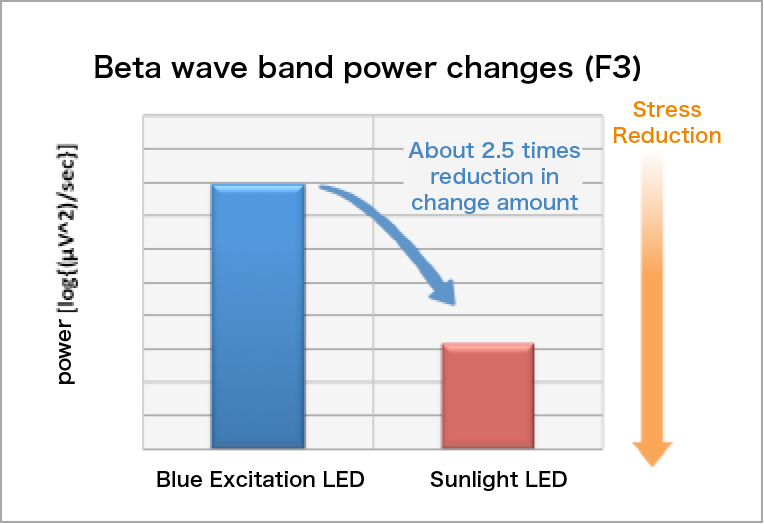
- ※Power change from start of work to end of work
Beta wave band power increase = stress increase
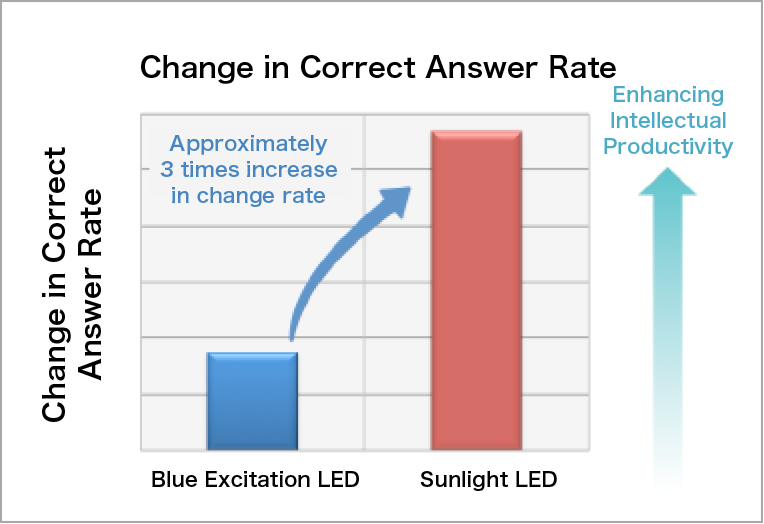
- ※Change in accuracy rate from start to end of work
Conclusion by Professor Shimada of Tokyo Denki University
Sunlight LEDs significantly demonstrated the effect of suppressing the increase in stress, and also showed the possibility of improving work capacity. This suggests that using sunlight LEDs instead of standard white LEDs could promote health through stress reduction and fatigue relief, and possibly improve work capacity.
Recommended Use Cases
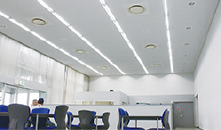
- Installation Location: Office
- Application: Improving work efficiency for 'work style reform'

- Installation Location: Schools / Cram schools, etc.
- Application: Children's Learning
Faithfully reproducing the appearance of objects
Research Contents
- Research Institution: Chiba University
- Test Levels: Two types, Chiba University LED and Ra90 Blue Excited LED
- Test Content: Subjective evaluation by individuals, comparing the appearance of objects under sunlight and under each light source.
Evaluation Results of Color Perception by Chiba University
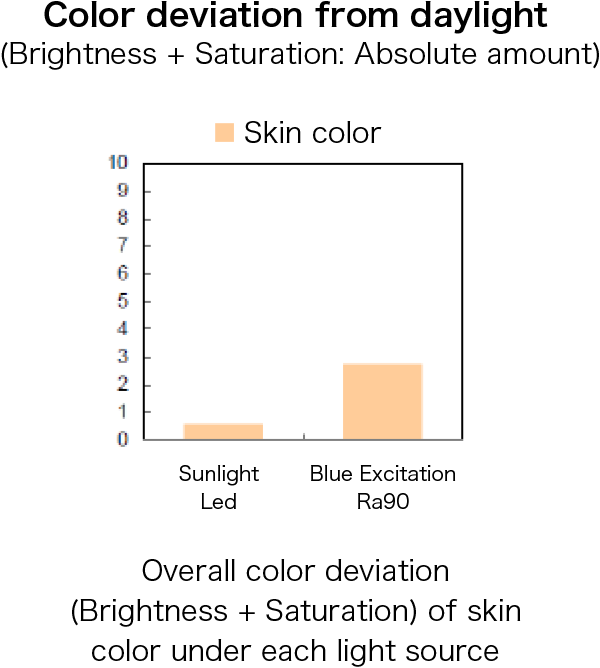
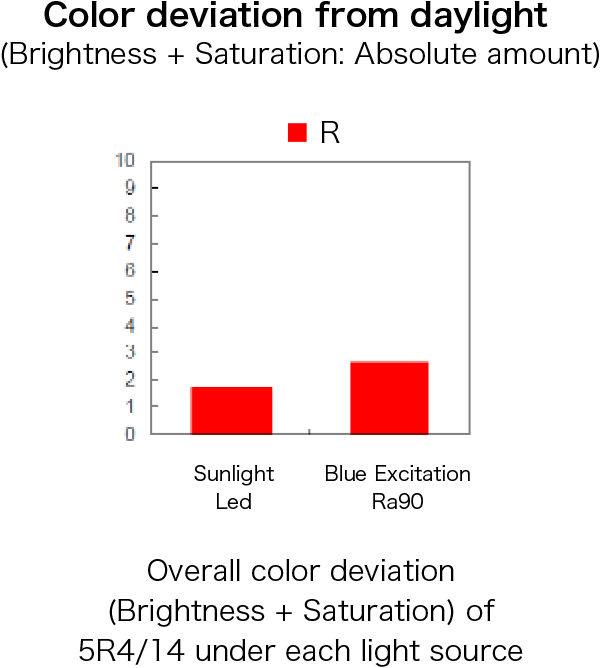
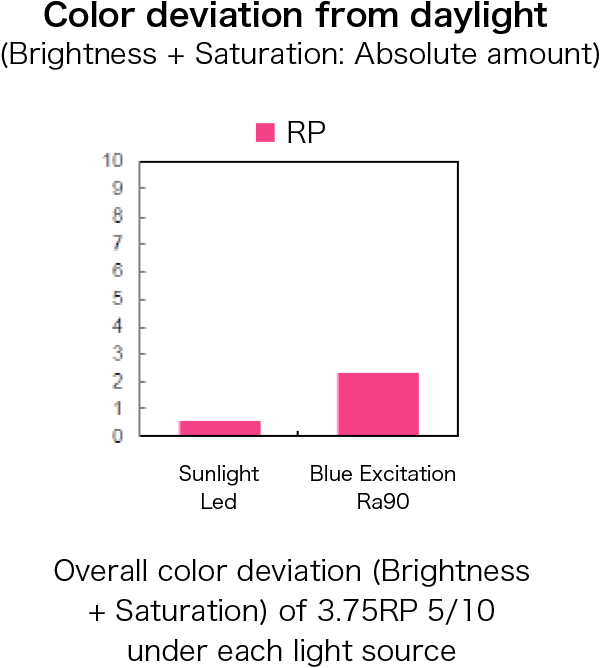
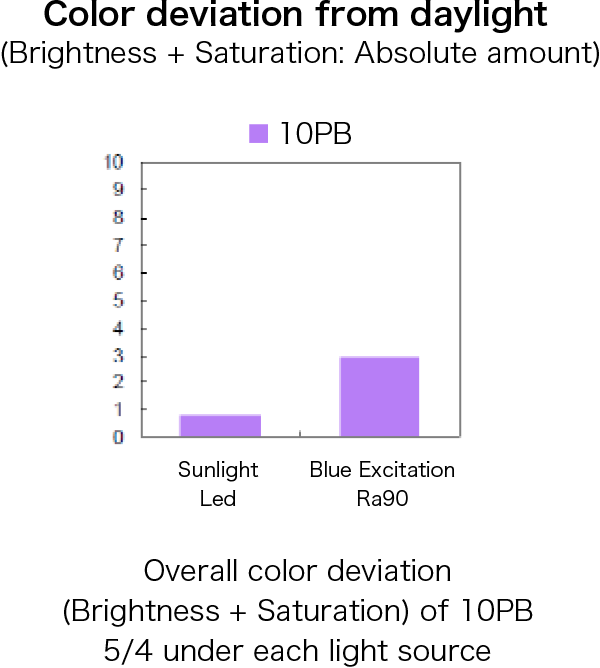
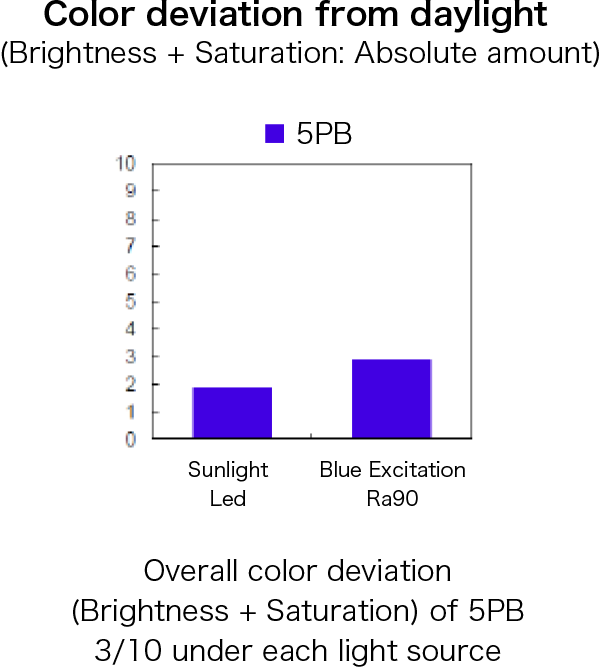
- ※The subjective difference in color perception from natural sunlight (daylight) for various colors is graphed. The closer to zero, the closer to the appearance under sunlight.
Ranking of color deviation (brightness + saturation) for each evaluation sample under each light source (in order of smallest color deviation)

Conclusion by Professor Mizogami of Chiba University
In color perception experiments using color wheels, color charts, and skin color, the sunlight LED had the smallest color deviation in all evaluation samples and had the best balance of color reproduction.
Recommended Use Cases
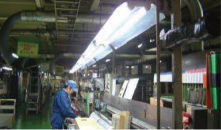
- Installation Location: Factory
- Application: Inspection related to color
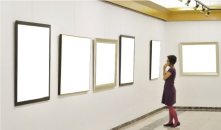
- Installation location: Art museum / Museum
- Application: Lighting for exhibits
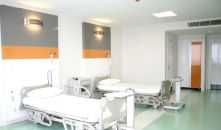
- Installation location: Examination room / Patient room in hospital
- Application: Judgement of patient's complexion
Reproduce the original appearance of wooden materials
Research content
- Research institution: Nagoya Institute of Technology
- Test level: Four types of sunlight LED, Ra80 blue excitation LED, general fluorescent lamp, and 3-wavelength fluorescent lamp.
- Test Content: Impression evaluation of cedar, cypress, maple, teak, and zebrawood under each light source
- Paper Presentation: 2019, Journal of the Basic Design & Art Association
Evaluation Results of the Appearance of Wooden Materials by Nagoya Institute of Technology
-
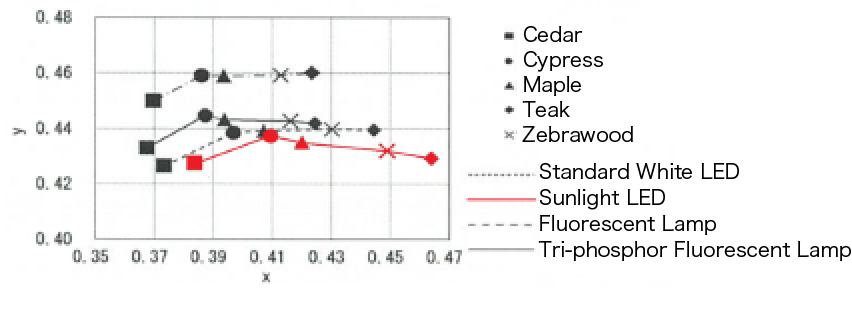
- *Chromaticity comparison when each type of wood material is irradiated with a test light source
When irradiated with sunlight, the chromaticity of all wood materials moves to the lower right."
- *Chromaticity comparison when each type of wood material is irradiated with a test light source
-
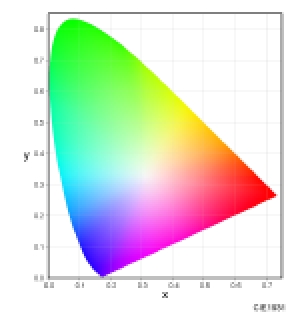
- *Chromaticity Diagram
Chromaticity moving to the lower right = increase in red component"
- *Chromaticity Diagram
- *Comparison of impression evaluations for each wood material with sunlight LED and blue excitation Ra80
When comparing the total number of people who gave positive and negative evaluations for each wood material, it was found that more people gave positive evaluations for the sunlight LED.
Conclusion by Professor Komatsu of Nagoya Institute of Technology
It was confirmed that sunlight LEDs increased impressions thought to be unique to wood materials, such as 'warm', 'soft', and 'calming', and positive evaluations such as 'beautiful' and 'like'. When illuminating wood materials with daylight-colored light sources, we confirmed the suitability of using light sources with a spectral distribution of visible light close to flat, like sunlight LEDs.
Recommended Use Cases
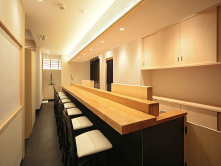
- Installation Location: Wooden Buildings
- Application: Interior/Exterior Lighting

